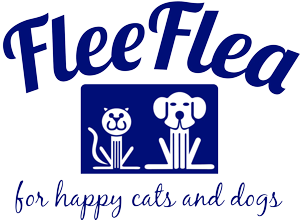FAQs
All Natural Flea Deterrent and Nutritional Animal Supplement
Flee Flea for Happy Cats and Dogs
Where can I buy Flee Flea?
What does Flee Flea cost?
Prices will vary from store to store, but our Recommended Retail Prices are currently $4.15 for sample bag, $20.55 for a 225gm jar, and $59.25 for a 1kg bag. Freight is additional
How much is freight?
Freight is additional, and small orders are from $6-$9. For larger orders please contact us for a quote.
Do I still continue using chemical flea treatments?
Can I feed my pregnant cat or dog Flee Flea? And what about kittens and puppies?
My cat or dog is still scratching? How do I remove fleas from our home?
My cat is fussy and won't eat Flee Flea. How do I include it in their diet?
Does Flee Flea have any other benefits?
Is Flee Flea just for cats and dogs?
I have heard garlic is poisonous for animals. Flee Flea contains garlic, is it safe?
One of our biggest stockists is the Animal Health Centre in Orewa; they sell a lot of Flee Flea to their customers. Owner Sarndra Urwin, Animal Naturopath, confirms that Flee Flea has proven very popular with their clients, who use it to repel fleas and also as a general tonic, and they have not had one adverse report.
You might also find the article below interesting, as it discusses the rumour of toxicity verses the actual compounds it contains.
Missing a question you want an answer to? Let us know!
Garlic: The Facts
Despite this fact, garlic is falling victim to mass hysteria spread through the internet. Yes, there are 51,174 sites devoted to warning about the “toxicity” of garlic, this hysteria has even prompted the ASPCA Animal Poison Control Center to place a warning on garlic although there is little scientific data to back this claim other than the fact that thiosulphate is also found in garlic. Yet, there are also over 400,000 sites still proclaiming its benefits, many of them from reputable holistic veterinarians who have widely used garlic in their practice for many years! How can an herb suddenly turn so bad?!
For centuries, as long as humans have been using herbs, garlic has been a primary remedy turned to in a majority of cases. For as long as people have been using garlic, they have also been feeding it to their animal companions. Its properties have proven far reaching, easy on the body and safe to use. In the past fifty years, during the rebirth of holistic medicine in the United States, garlic has been in the forefront.
In my own experience, garlic has also benefited pets with cancer, diabetes, liver, heart and kidney disease, uncontrollable staph infections and a host of other conditions, as well as been a staple in my recommended preventative protocols. It has been widely used by hundreds of thousands of pet owners with no reported negative side-effects — except its effect on their animal’s breath — until now.
This is the point; garlic has suddenly become a “suspect,” not proven the culprit. Do not let mass hysteria determine a holistic care program for your dog or cat. Follow hundreds of years of “proven use” rather than recent “suspicions” in regards to this miracle herb, as garlic is known to be. As with anything, do use garlic in reasonable doses, and do know that you can trust history over hysteria.
